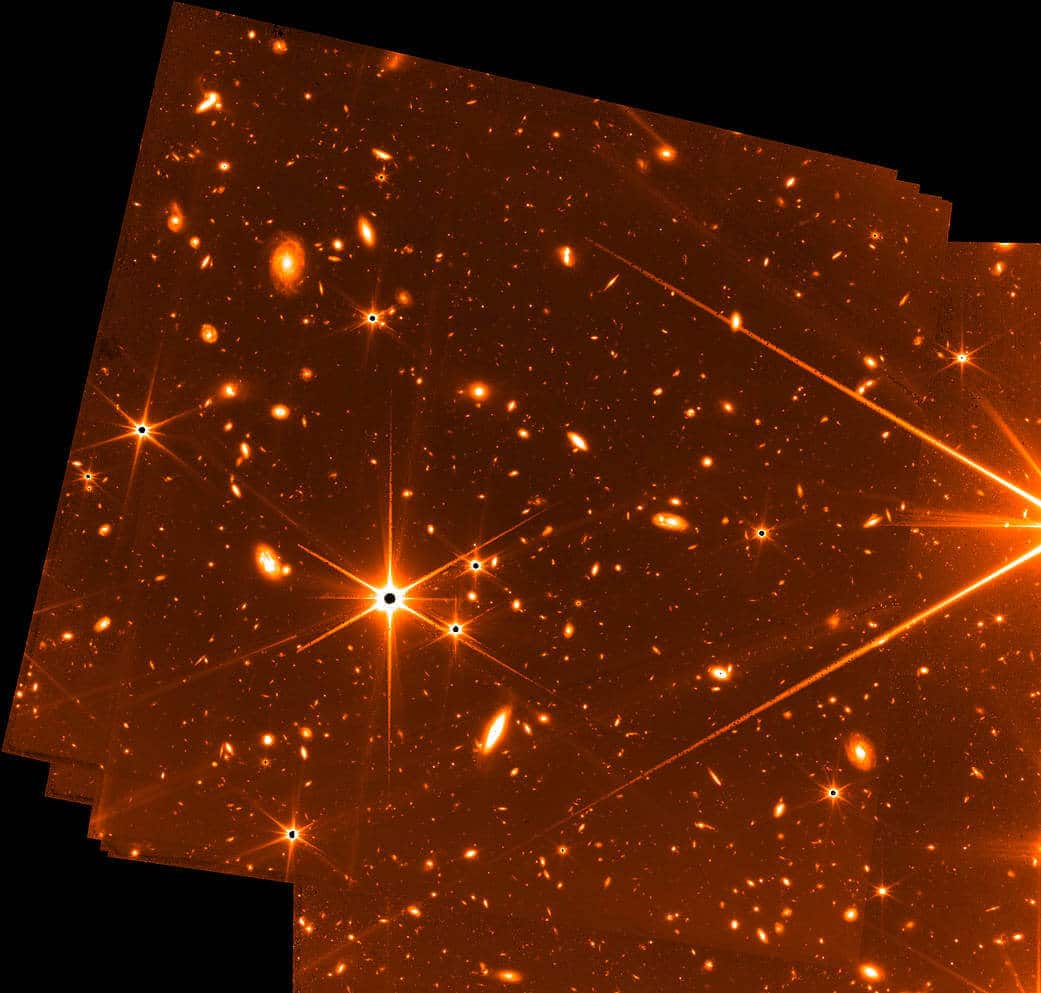Tonight, between July 11 and 12, the American space agency NASA will reveal the first scientific photographs of this advanced space telescope, at a press conference chaired by US President Joe Biden, and the head of NASA, Bill Nelson * Live broadcast starting at midnight Israel time

The new space telescope of the USA, Canada and Europe, Webb, took the deepest image of space to date, as part of the navigation sensor test before the start of the operational operation of the telescope, on July 12, 2022. The sensor is developed by the Canadian Space Agency. We emphasize that the photograph and its publication happened by chance; The space agencies had absolutely no intention of downloading images from the telescope or press at this stage. In fact, the images from this device are not supposed to be saved after they have finished their role as navigational aids, due to bandwidth limitations, but the initiality of the image had to be shown to humanity.
So what do you see here in Webb's photo? Several "nearby" stars were photographed and around them thousands of galaxies that have not yet been seen by the human eye. This is because Webb shoots in infrared and at frequencies not found in previous telescopes.
The image was obtained by 72 exposures over 32 hours. It remains only to imagine the footage that Webb will launch when he is in maximum activity. Civilizations on other planets, new types of stars, never-before-seen structures of galactic concentrations, surprising and new elements for humanity navigating the universe - hand in hand with imagination and science fiction.
The heir of mourning
The telescope, which is considered the successor of the "Hubble" telescope, is 1.5 million kilometers from the Earth, at the La Grange 2 -L-2 point, one of five points in space where if you place any object - it will be captured by the forces of gravity and move together with the Earth in its orbit around the sun The location was chosen, among other things, to reach a situation where the telescope, which operates with heat-sensitive infrared means, could have its "back" to the sun and the heat coming from it.
Tomorrow, July 12, the American space agency NASA will reveal the first scientific photographs of this advanced space telescope, at a press conference chaired by US President Joe Biden, and the head of NASA, Bill Nelson. Webb's first scientific/operational images arrive exactly on schedule - 6 months after launch last December. The American-Canadian-European telescope was developed in an international effort whose scope of cost was about 10 billion dollars.
At the end of the week, NASA published a list of five cosmic objects of various sizes, which the telescope observed in the last weeks, in preparation for the festive opening.
The Southern Ring Nebula, a gas shell ejected from a dying star about 2,000 light years away from us and visible in the southern hemisphere
Carina Nebula, a vast swirling expanse of gas and stars within which are some of the most massive and explosive systems in the Milky Way located 7,600 light-years from Earth.
Stephen's Five - a tight cluster of galaxies in the Pegasus group, two of which are merging about 290 million light years from here.
The planet WASP-96b – a gas giant whose mass is about half the mass of Jupiter and orbits a star 1,150 light years away from the solar system. It is a hot Jupiter type star (a star the size of Jupiter or larger orbiting its sun in a close orbit) and although there is no chance of finding life there, it will be possible to learn new details about this type of objects.
And finally NASA will release a photo of A strip of southern sky known as SMACS 0723 previously photographed by the Hubble Space Telescope and other telescopes. In this area there is a huge cluster of galaxies whose gravitational field acts as a lens (so called Gravitational lensing) which amplifies the light from galaxies behind it and thus allows us to observe objects whose light reaches us from distances of billions of light years and has been amplified by the gravitational lens.
Later, teams of astronomers plan to use the Capricornus Web to observe the seven planets orbiting a star called Trappist-1. Following previous observations, it was hypothesized that three of these planets are located in the habitable zone.
לExtension on the NASA website
More of the topic in Hayadan:
- The Webb Space Telescope begins aligning several instruments
- Webb Space Telescope: Seeing far. is very!
- On the occasion of the launch of the Webb Space Telescope: the five most exciting telescope images of the universe
- For the first time: a photograph that may be of a planet around another sun * A new type of planet

3 תגובות
The uniformity of the full moon image, which does not conform to Lambert's law, has been a well-known matter in the scientific literature for many years. What is unbelievable is the explanations for this in the scientific literature.
Uri Lakish
But he doesn't look uniform... Even with simple binoculars you can clearly see that it is round.
Not only that - the full moon looks a little different every month. This cannot be explained if he was flat….
To see the full moon you don't need the Webb telescope. No need for a telescope at all. And there is still no satisfactory explanation why it looks uniform, like a flat disc.